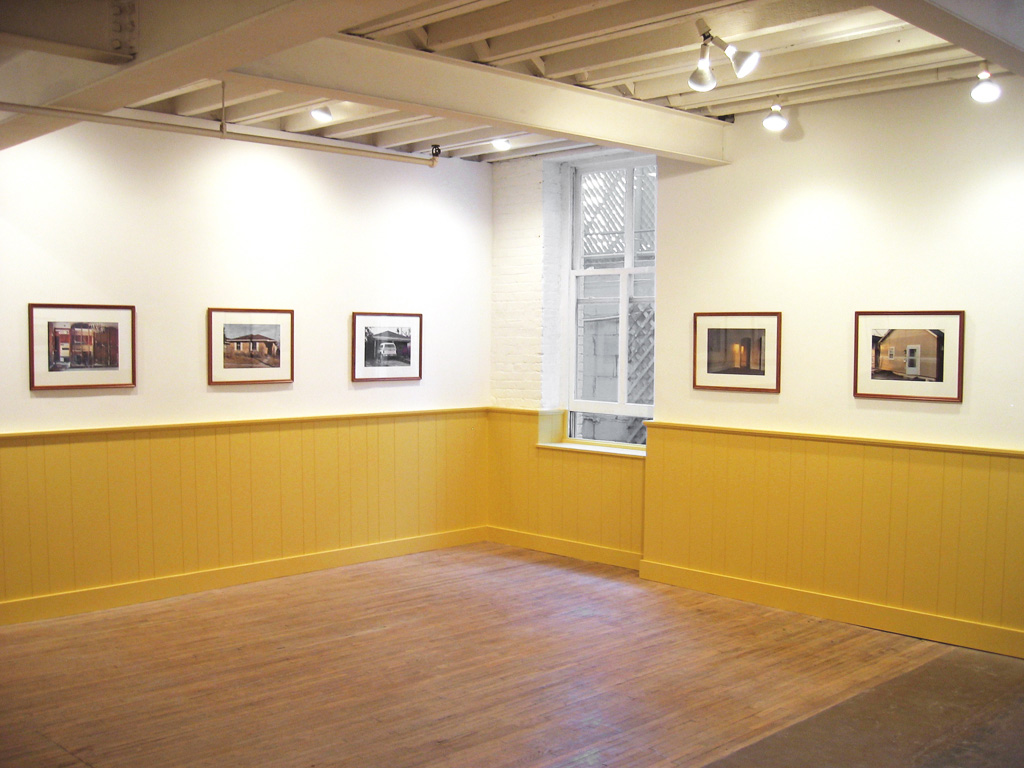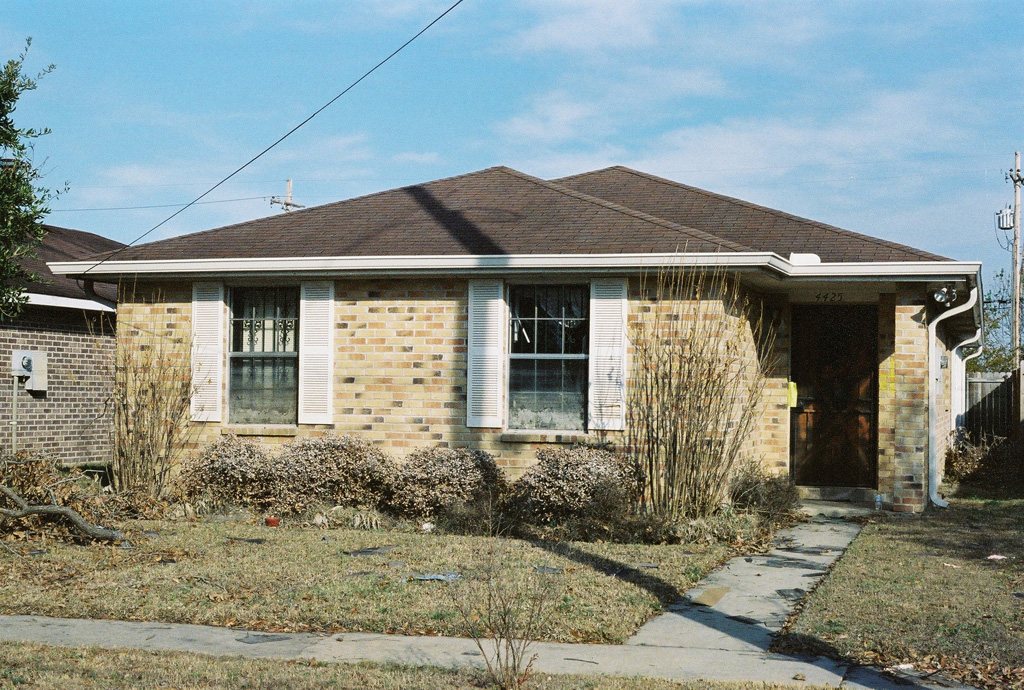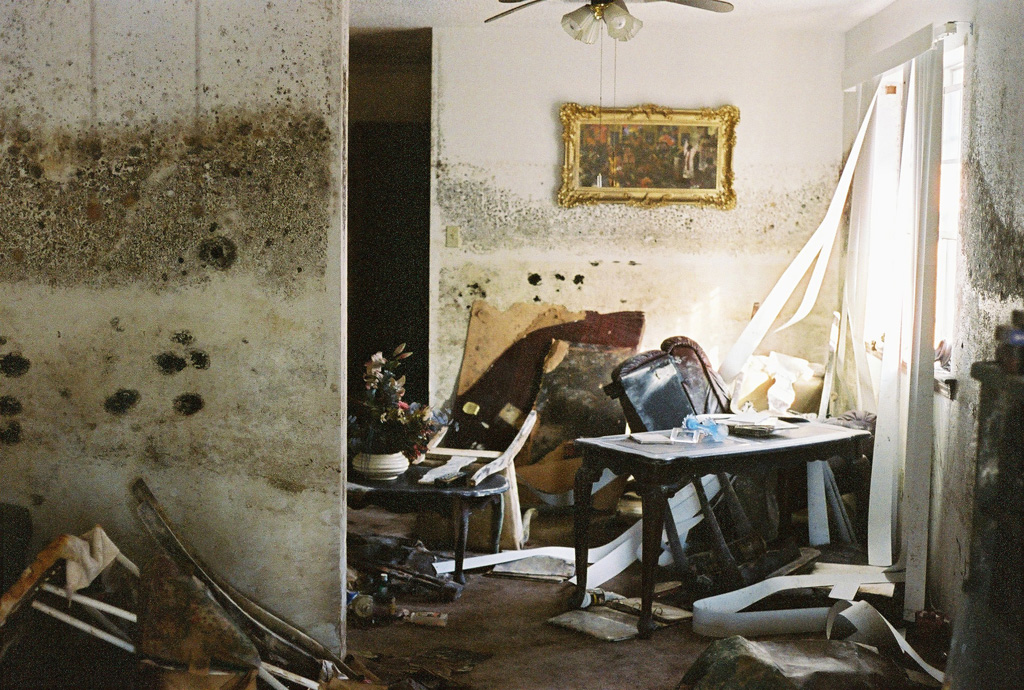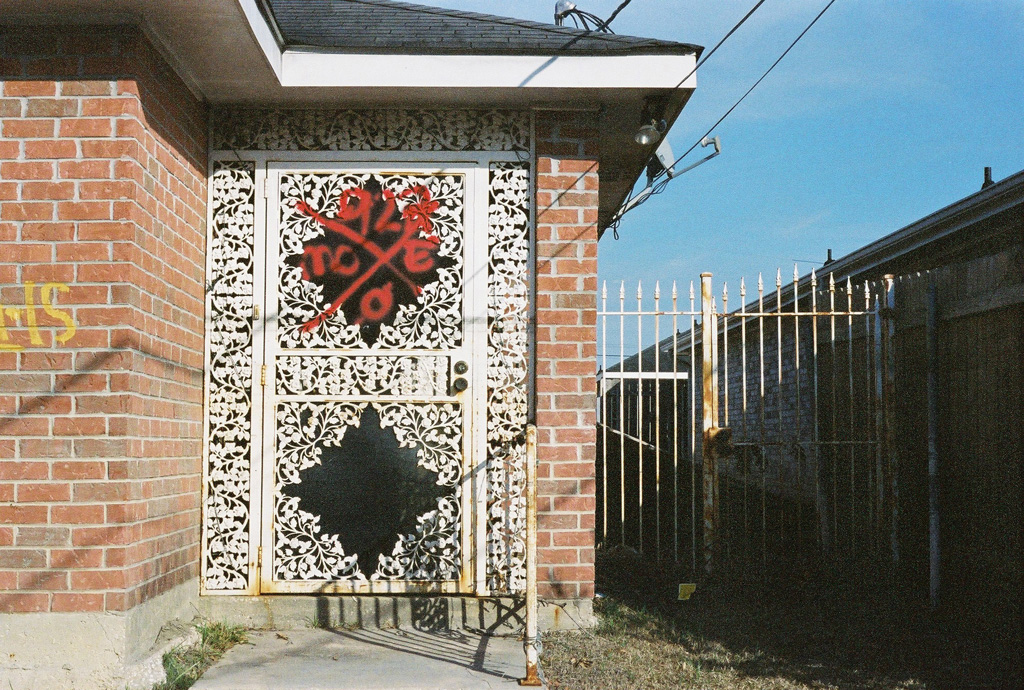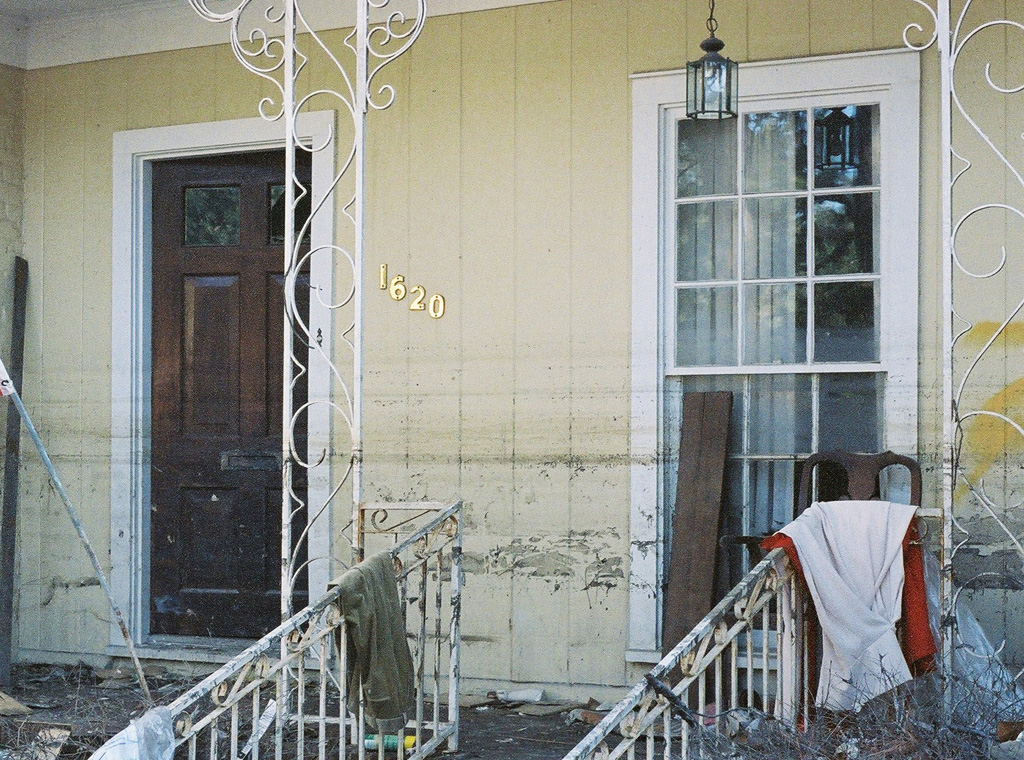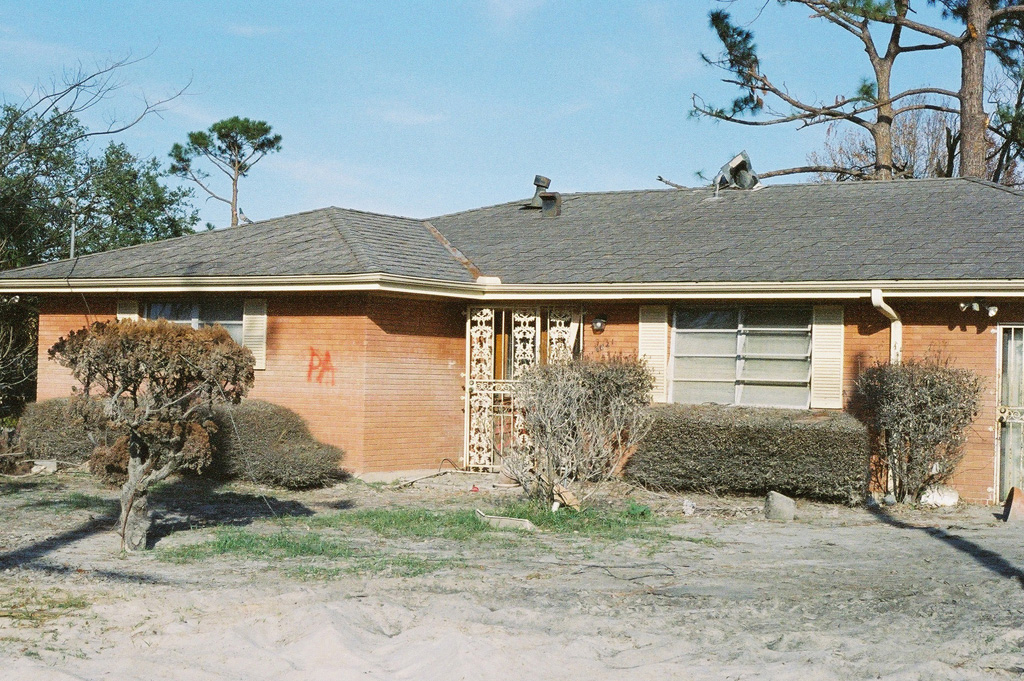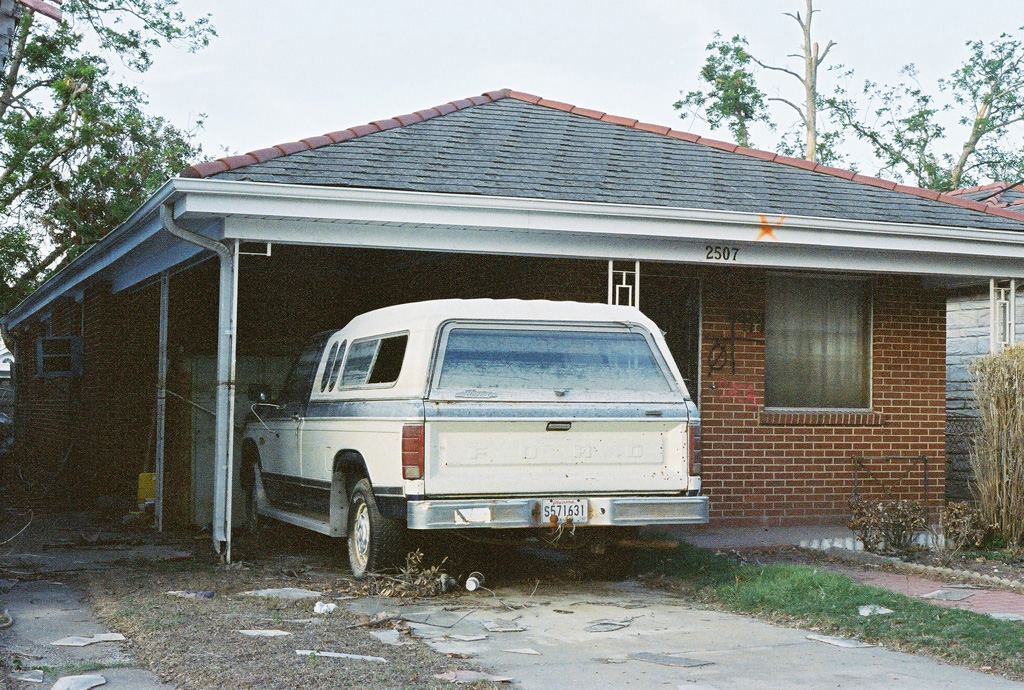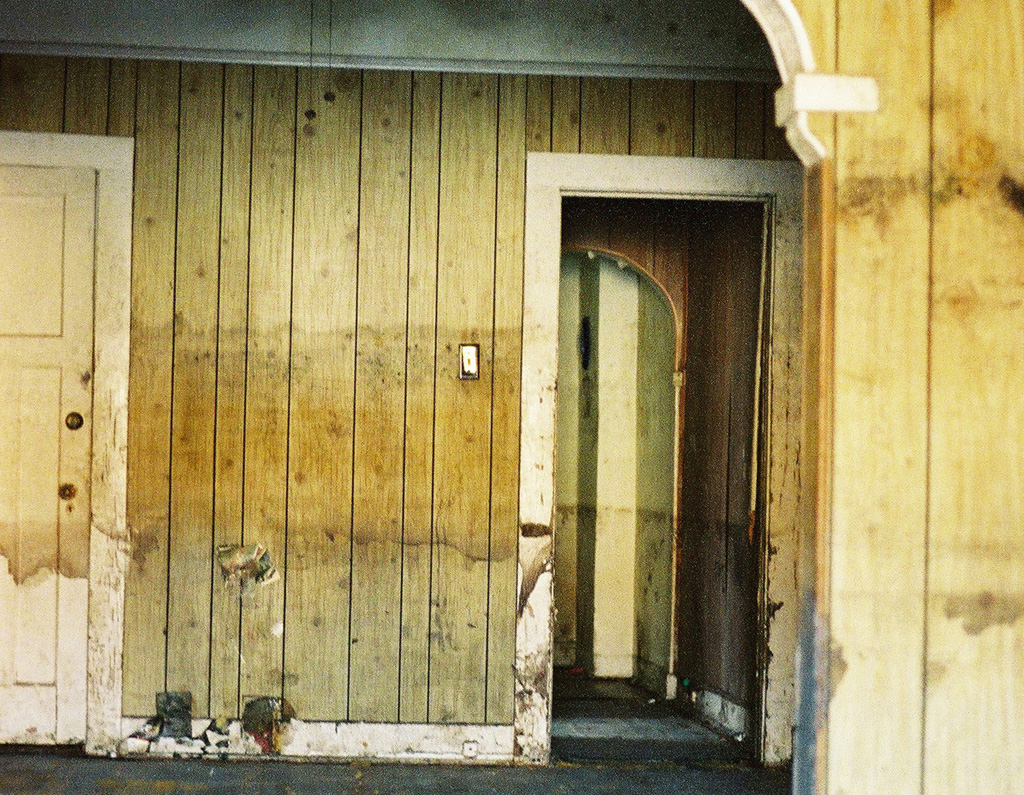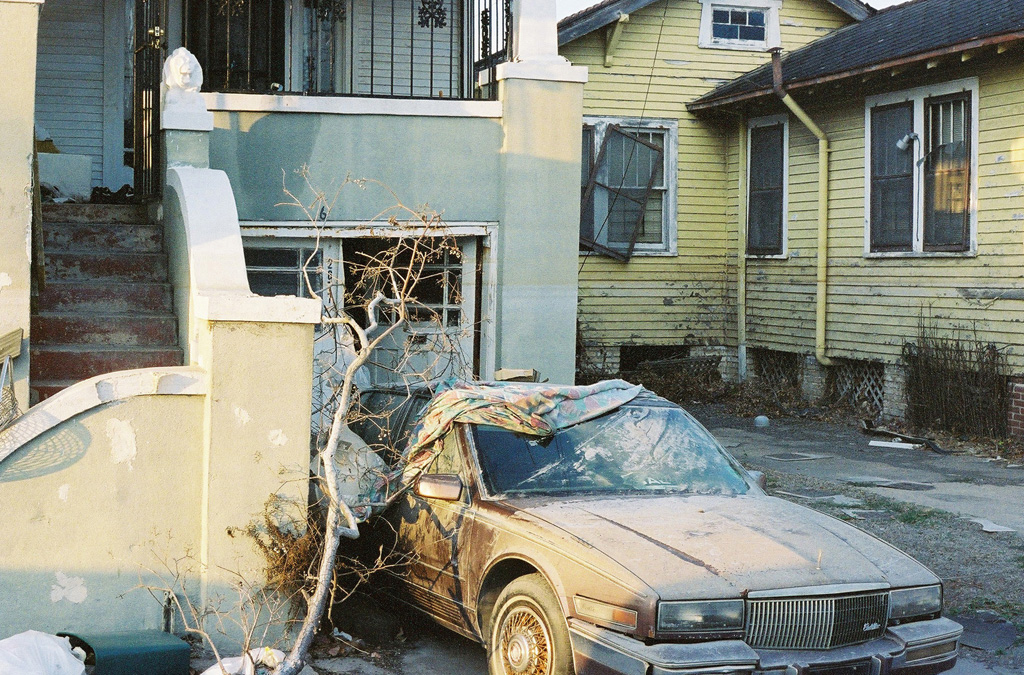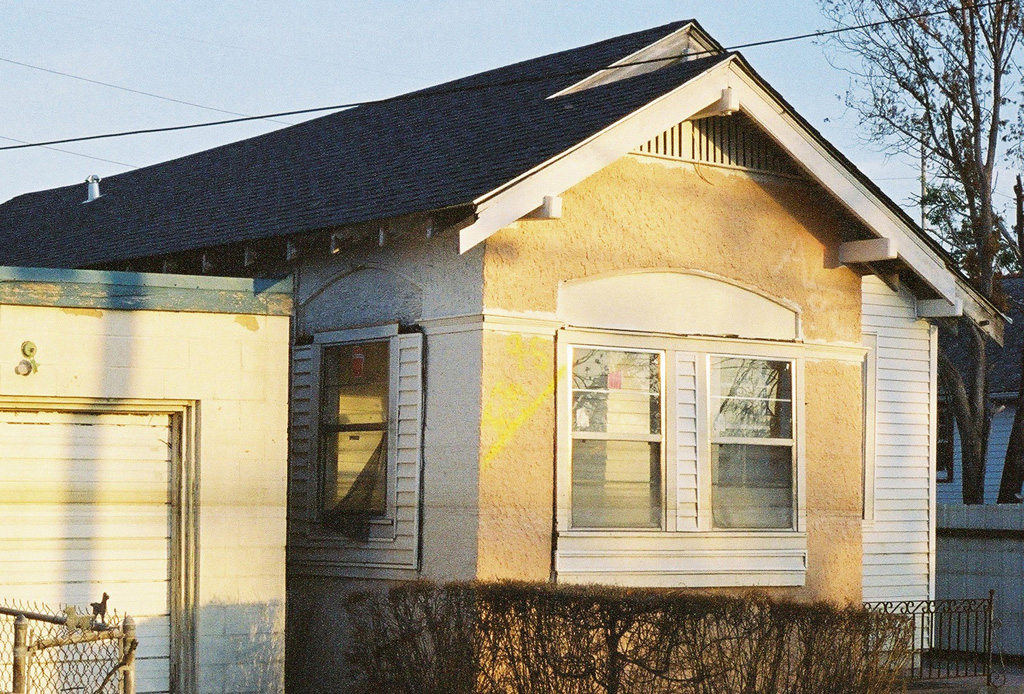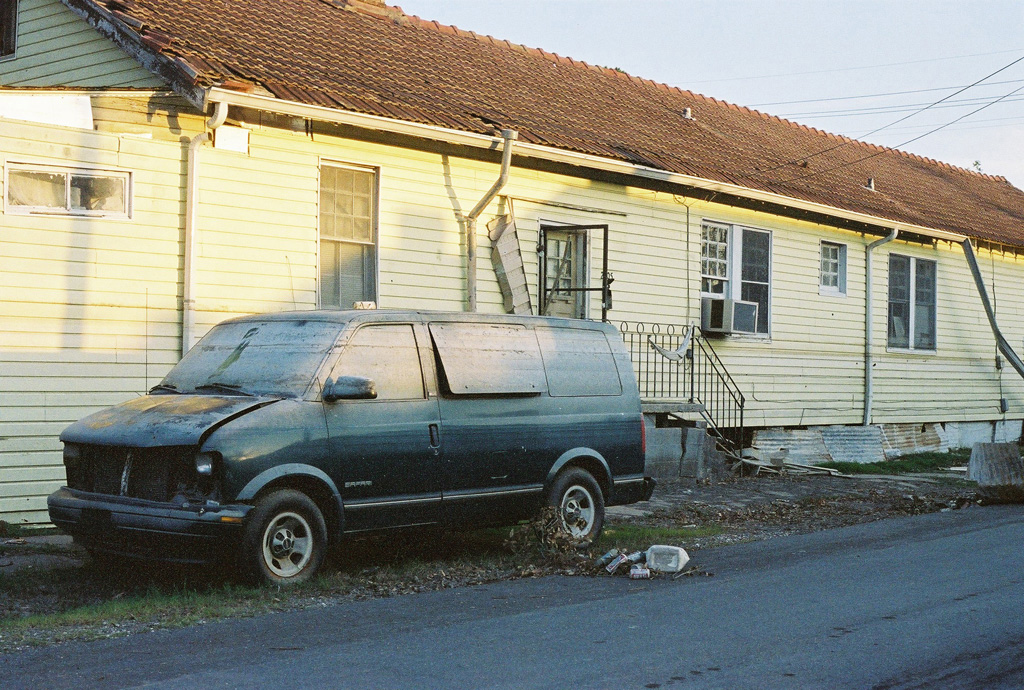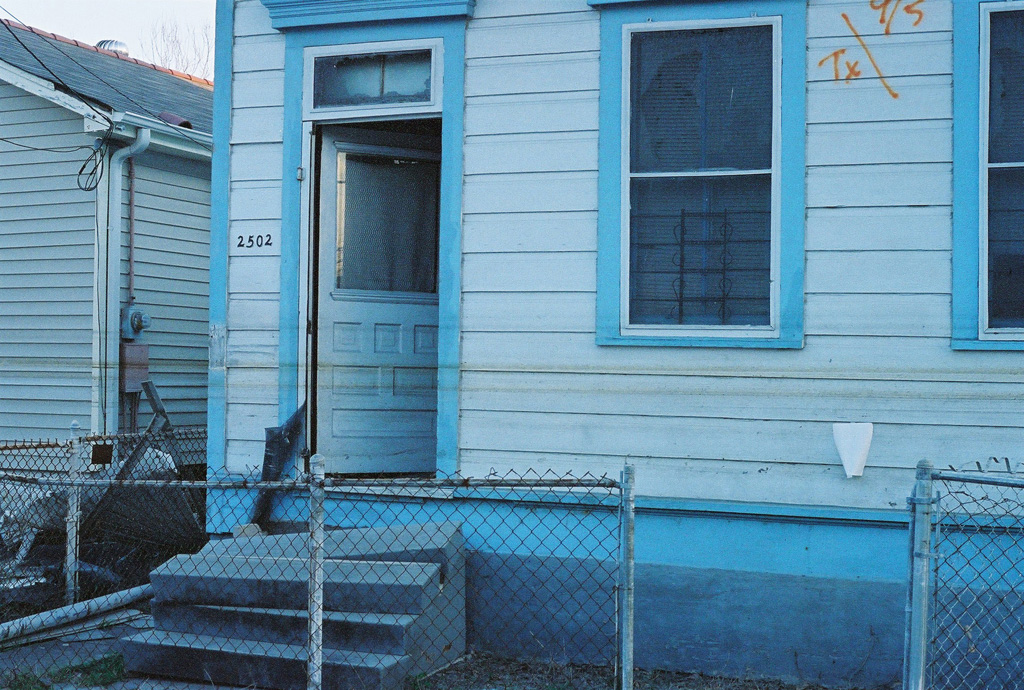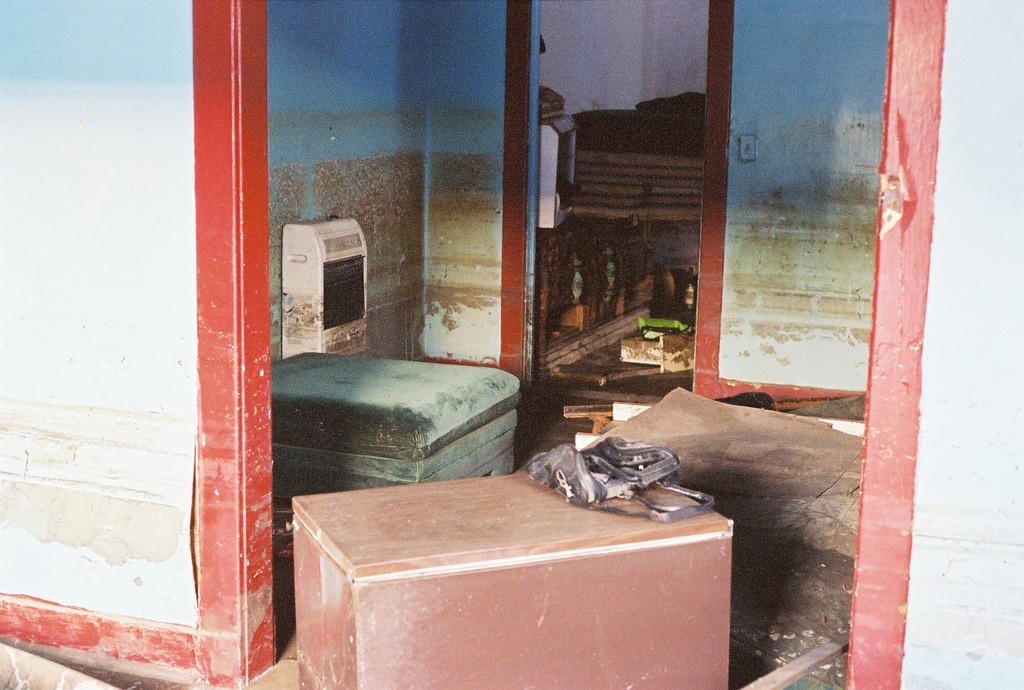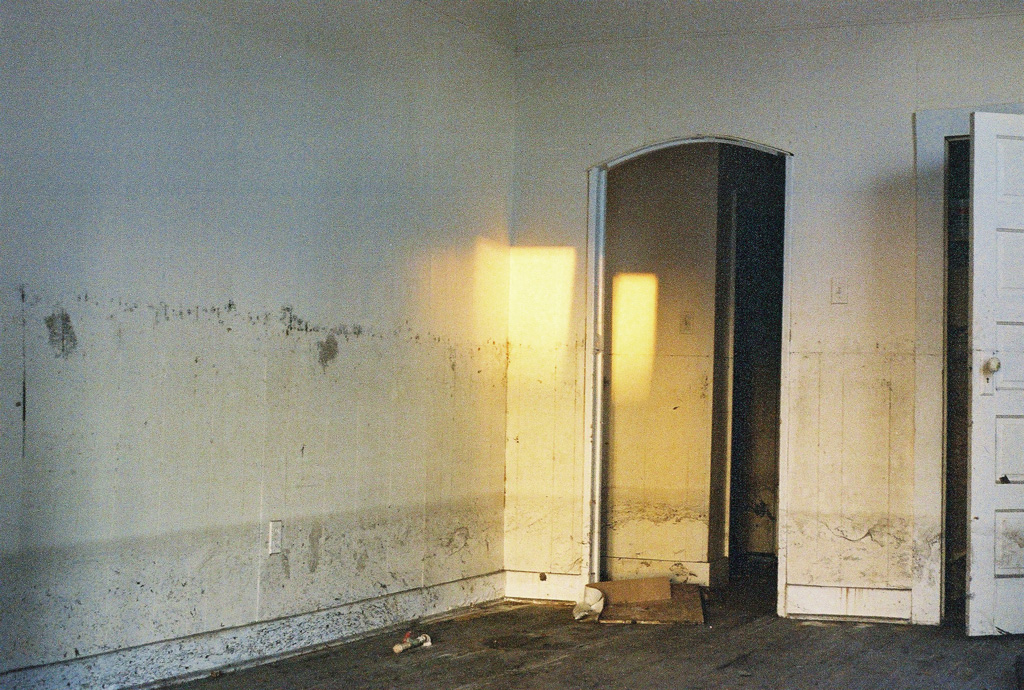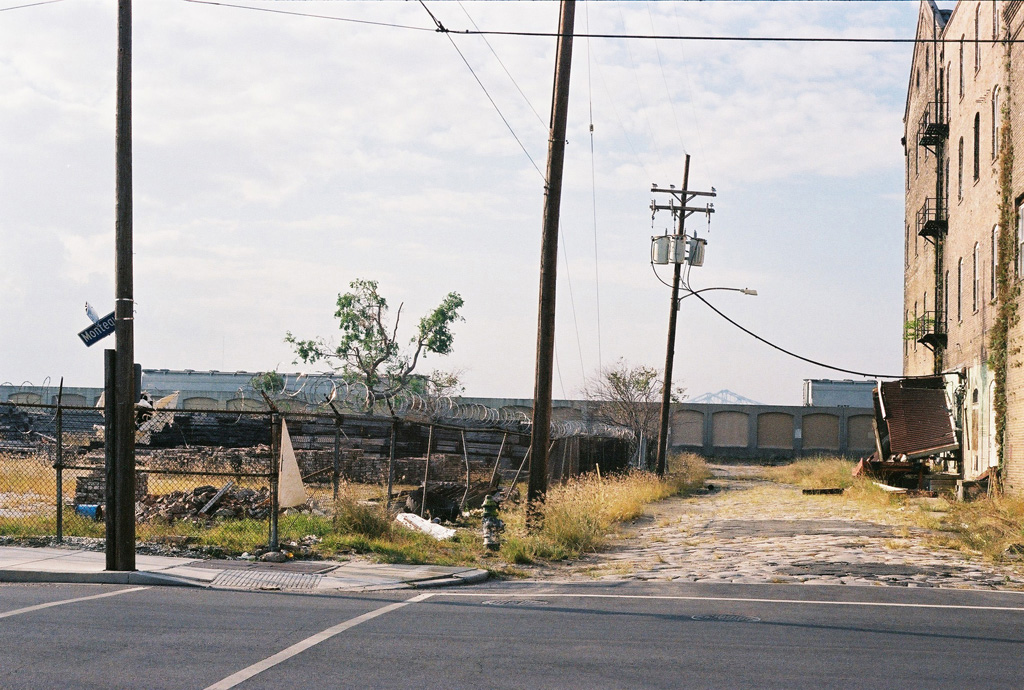17 framed C-prints
image size 11 1/4 x 16 1/2 inches; frame size 17 x 25 inches each
wood, paint
dimensions variable
“Waterline” is an installation of framed photographs hung in a level line above a wainscot of painted paneling. The photographs were taken on a 2 1/2 hour walk through Gentilly and St. Roch in Central New Orleans on November 6, 2005, two months after Katrina.
I had gone to New Orleans to work at the Louisiana State Museum. One of their buildings had a damaged roof, and we went to help move the contents to temporary storage in Baton Rouge.
My walk took me through areas that had been flooded, and were still unoccupied. This was not, however, the dramatic Lower Ninth Ward of media coverage. Gentilly is a middle class neighborhood of ordinary homes. It could be anywhere in America. That it was so ordinary made it more awful. I saw two or three families clearing their homes; a few cars passed. The silence was eery.
My idea for making an exhibition that focused on the waterline developed during the walk. It seemed necessary to bring this experience out. It felt as if it could be my own neighborhood; but it was also like walking through a post-apocalyptic sci-fi movie set . I wanted to photograph the ordinariness and the silence. The waterline would act as a sign rather than a description of what had happened. More obvious in some photographs than others, its presence accumulates during the viewing. The same is true for the army’s paint markings listing date and body count.
The paneling of the wainscot is that pressed “random board” sheet paneling so common throughout the US in the last quarter of the twentieth century. Often subsequently painted over, it appears as such in one of the photographs, and unpainted in another.
My aim in using the wainscot is to establish a strong horizontal line using an architectural element that will also, I hope, work against the distancing effect of an exhibition space. The photographs are in ordinary household frames bought from a local store. I ate sometimes in a restaurant that had watercolors of the French Quarter hung over a wainscot.
When I was in New Orleans it became important to witness the city, and to bring back that witnessing. In the news events seem distant. This was close: I worked with people who had lost homes to the flood. What I saw was not happening to someone else, it was us, great big USA unable to do what little Holland does. I keep focusing on the normalcy because this is what struck me most.
What happened in New Orleans was not only an act of God, it was also an act of government. It is an example of our government’s lack of concern for its people, and of the vulnerability of our lives and aspirations to that unconcern.
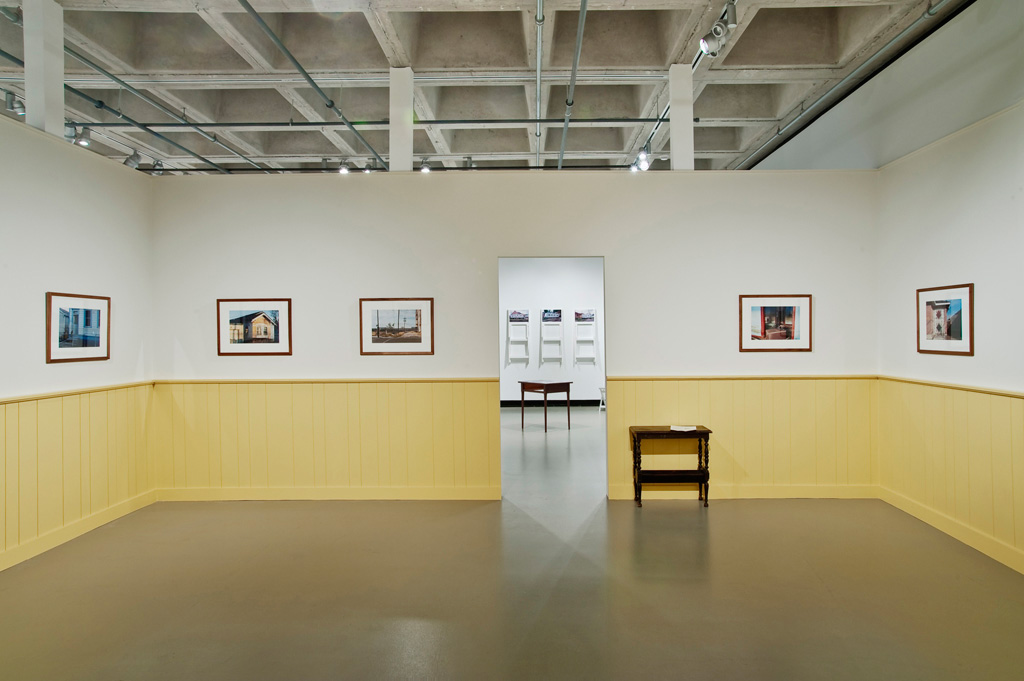 Installation Clifford Gallery, Colgate University, New York, 2010
Installation Clifford Gallery, Colgate University, New York, 2010
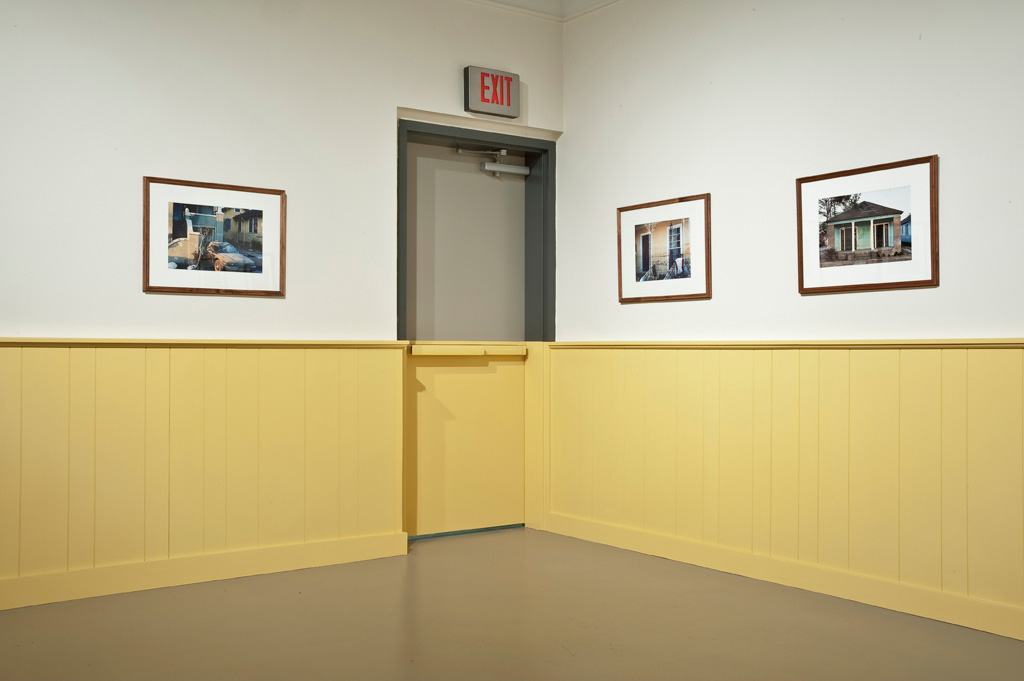 Installation Clifford Gallery, Colgate University, New York, 2010
Installation Clifford Gallery, Colgate University, New York, 2010
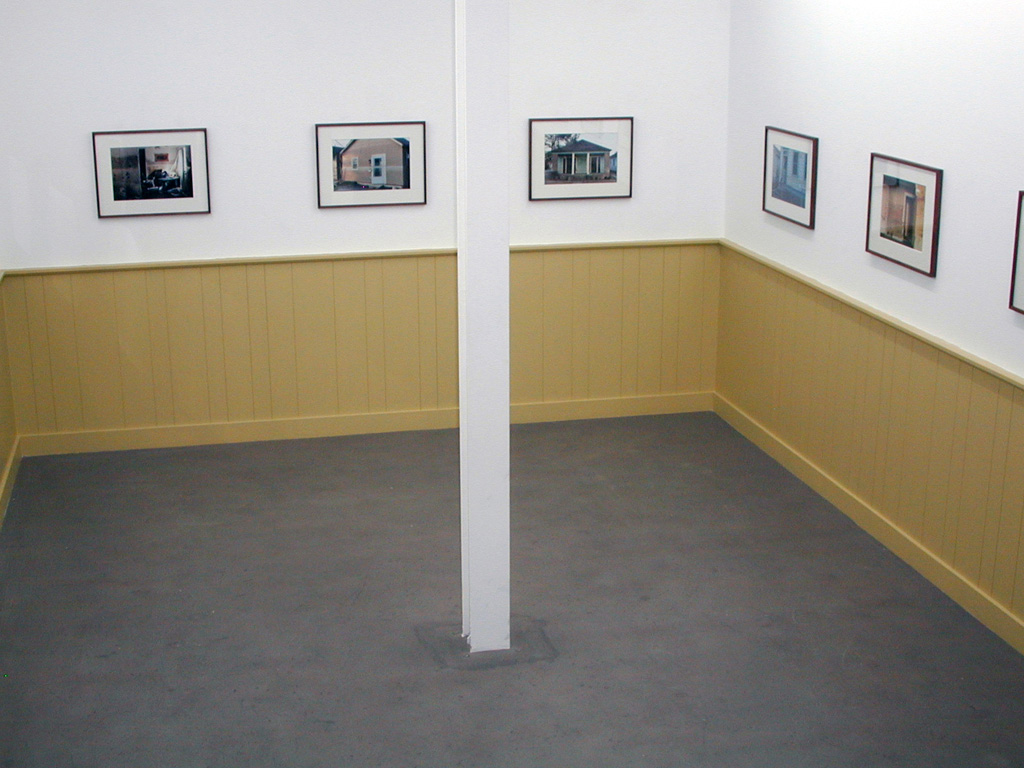 Installation Grimm-Rosenfeld, Munich, 2006
Installation Grimm-Rosenfeld, Munich, 2006
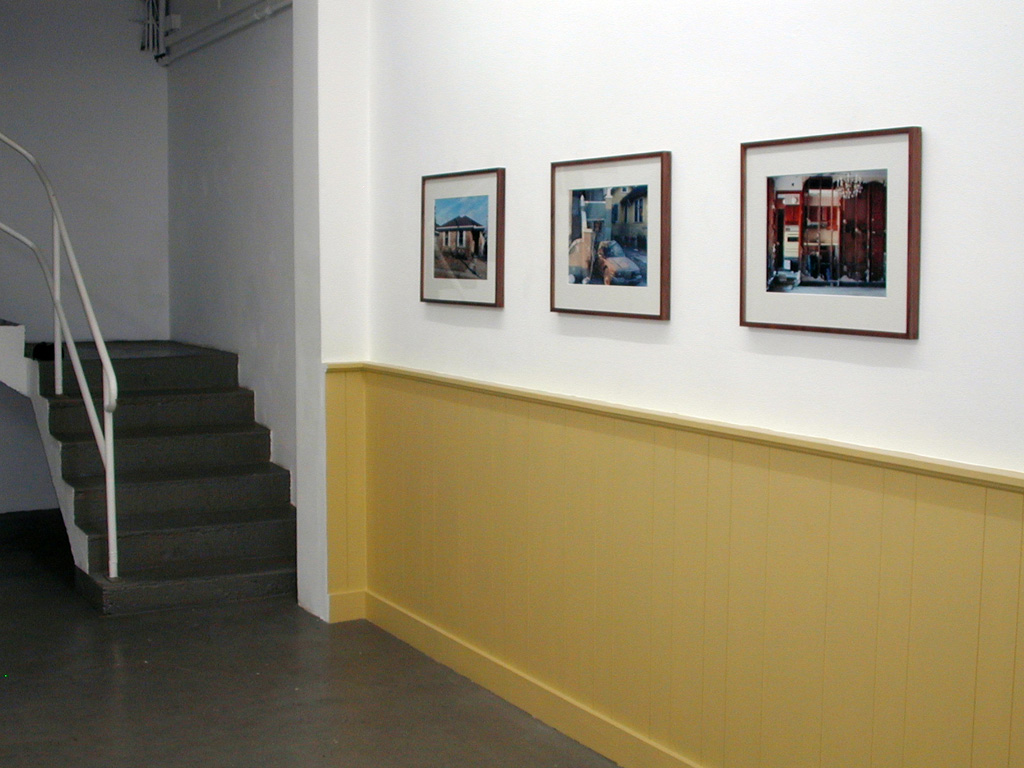 Installation Grimm-Rosenfeld, Munich, 2006
Installation Grimm-Rosenfeld, Munich, 2006
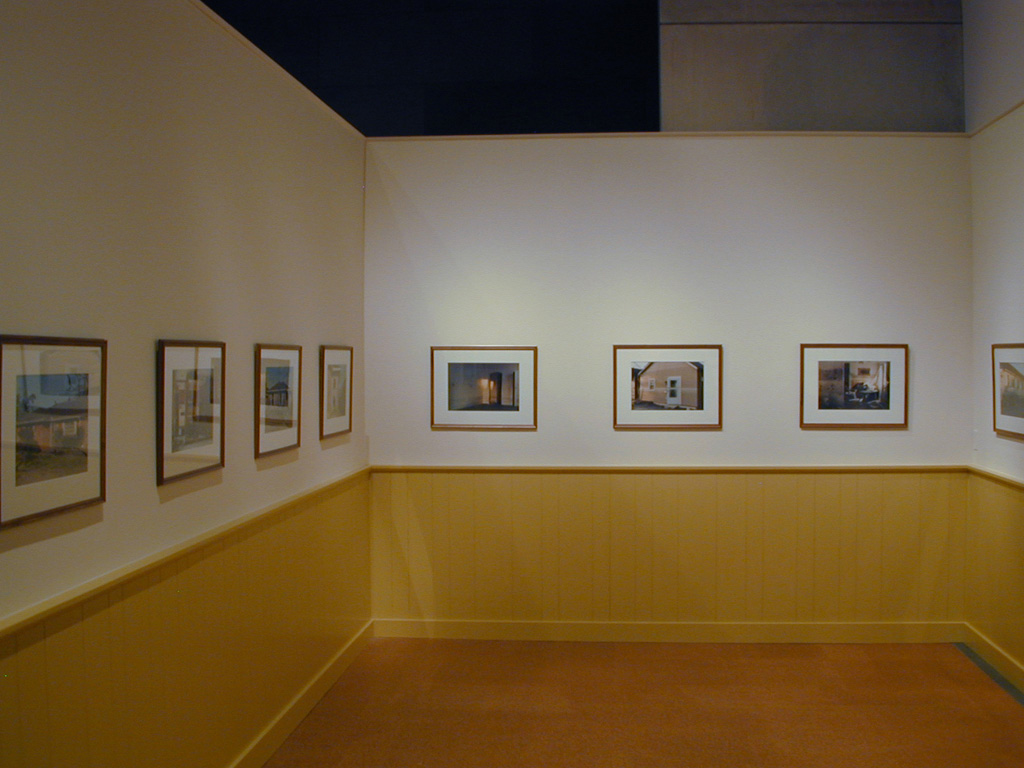 Installation Zilkha Gallery, Wesleyan University, Connecticut, 2006
Installation Zilkha Gallery, Wesleyan University, Connecticut, 2006

